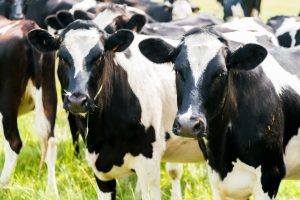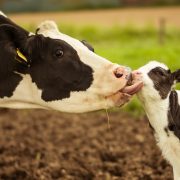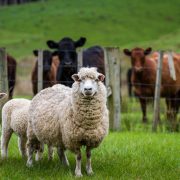Descriptive analysis of national bovine viral diarrhoea test data in England (2016–2023)
Descriptive analysis of national bovine viral diarrhoea test data in England (2016–2023)

Open access
In our edition of: Aug 2025
In our categories of: farm animals
our summary:
Prosser, N.S. et al. (2025) Descriptive analysis of national bovine viral diarrhoea test data in England (2016–2023). Veterinary Record, e5325.
The aim of this study was to analyse test data submitted to BVDFree England between 2016-2023, to assess changes in the prevalence of bovine viral diarrhoea (BVD) in participating herds, and farmer engagement with the scheme since the previously published study which included analysis up to the end of 2020.
BVDFree England, a voluntary testing and eradication scheme for BVD in England started in 2016 and ended in July 2024. The scheme enabled farmers to submit BVD test results to obtain a herd status after two years of testing following the scheme requirements.
The final dataset included 1,409,227 tests from 7005 herds, this represented 20.9% of the 33,489 herds in England (June 2023 data). For analysis the herds were split into two types of testing regimes: virus testing and antibody testing. The ‘virus testing’ used individual BVD antigen testing tags, and the number of tests conducted in a year had to be at least 60% of the number of cows on-farm. The ‘antibody testing’ used individual antibody testing from at least five calves in each youngstock group.
Overall, the prevalence of BVD positive herds declined between 2020 and 2023. The prevalence of BVD in herds that were tested for multiple consecutive years decreased with increasing number of years tested, with 0.1% of tests positive in year five compared to 0.8% in the first year.
The proportion of herds using each testing regime had not changed since 2020, with dairy herds more likely to use individual virus tests than beef herds. Fewer farmers had joined the scheme for the first time each year since 2019 (214 in 2023 compared with 2,614 in 2019) and the number of submitted tests similarly declined.
Limitations of the study include the tested herds were not representative of all English herds, that overall uptake of voluntary testing as part of this scheme was low, and that in the period covered by this study the number of herds submitting tests for the first time had decreased significantly.
The study provides some evidence of the continued reduction in the prevalence of BVD in herds in the BVDFree England dataset between 2020 and 2023. The decline in the number of farmers engaging with the BVDFree scheme in recent years suggests that there will need to be increased engagement with farmers via the new Animal Health and Welfare Pathway scheme to ensure continued progress in the control of BVD in England.
Previous study
Prosser, N.S. et al. (2022) Descriptive analysis of national bovine viral diarrhoea test data in England (2016‒2020) Veterinary Record, 191 (5), p. e1854. https://doi.org/10.1002/vetr.1854
The following may also be of interest:
Bovine viral diarrhoea (BVD) [AHDB] [online] Available from: https://ahdb.org.uk/bvd [Accessed 24 August 2025]
BVDFree England scheme [AHDB] [online] Available from: https://ahdb.org.uk/bvdfree [Accessed 24 August 2025]
BVDFree England scheme [BCVA][online] Available from: https://www.bcva.org.uk/resources/bvdfree-england [Accessed 24 August 2025]
Claiming CPD for reading inFOCUS articles
Reading and reflecting on articles can count towards your CPD, and we have a template to help you with the process.
Image copyright attribute: pranodhm






Leave a Reply
Want to join the discussion?Feel free to contribute!